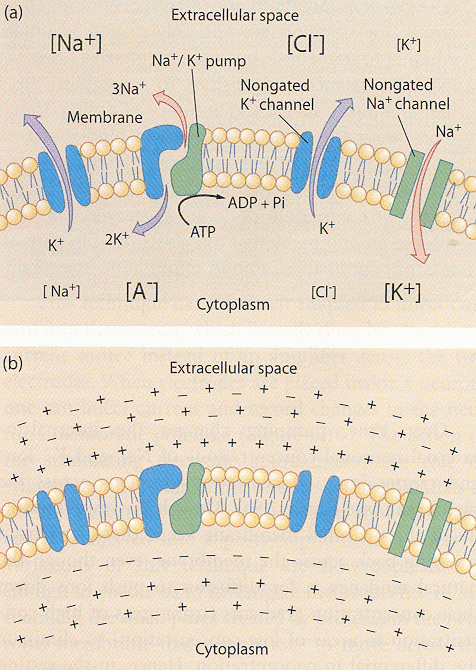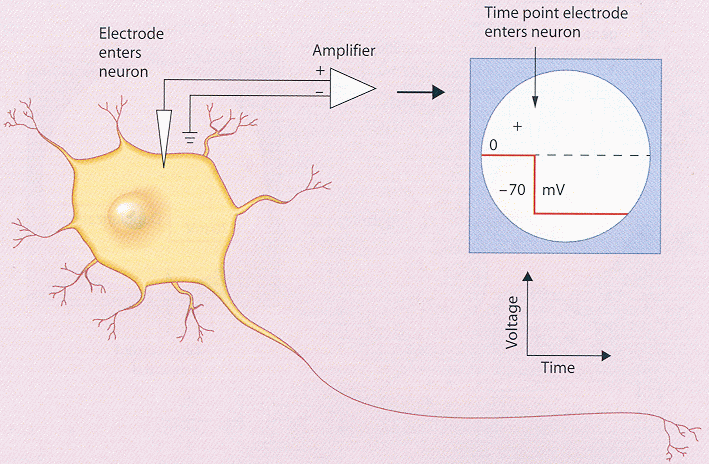
Enzymes (proteins) located in the neuronal membrane behave like pumps which move sodium ions (Na+) out of the cell and potassium ions (K+) into the cell. In the resting state there is a higher concentration of Na+ in the extracellular fluid and higher concentration of K+ in the intracellular fluid.
Transmembrane proteins form two types of nongated ion channels, the K+ channels and the Na+ channels, through the membrane. Due to the ion concentration gradients, the nongated K+ channels leak potassium ions out from the neuron, and the nongated Na+ channels leak sodium ions into the neuron.
As there are more K+ channels than Na+ channels, there are more out going K+ ions than in coming Na+ ions. As the result, an electrical potential difference is created across the membrane. The outside is about 70 mV higher than the inside. If the potential of extracellular space is used as the reference, the membrane potential is negative 70 mV. The neuron with this resting potential difference is said to be polarized.

